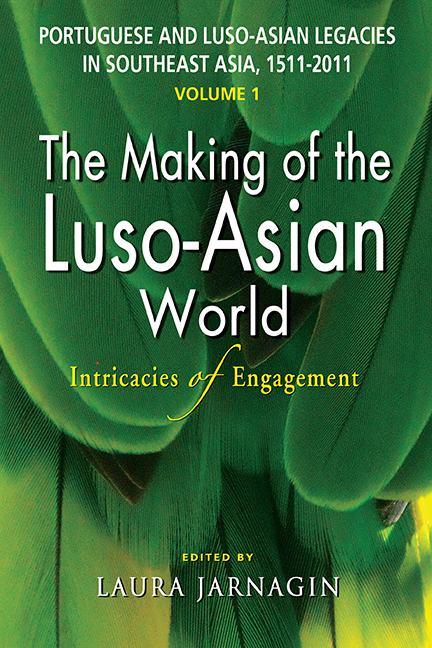 Portuguese and Luso-Asian Legacies in Southeast Asia, 1511–2011, vol. 1
Portuguese and Luso-Asian Legacies in Southeast Asia, 1511–2011, vol. 1 from Part Three - Mixed Legacies: The Portuguese and Luso-Asians in the Twentieth and Twenty-first Centuries
Published online by Cambridge University Press: 21 October 2015
There is no better introduction to the Goa of its Indo-Portuguese writers than an excerpt from the novel O Último Olhar de Manú Miranda (The Last Look of Manú Miranda) by Orlando da Costa (1929–2006), published by Âncora in 2000. It can be said that this work is a Bildungsroman, the coming-of-age novel of the Brahmin Catholic Manuel João da Piedade Miranda, entering the world some decades before the end of the Portuguese colonial period with two possible paths open to him: either the route of the Metropolis like those disillusioned with their native land, or becoming a batcar (landowner) like his ancestors. This novel, in the words of Orlando da Costa himself, accompanies the life experiences of the Goa of its author, who was born in Mozambique and died in Portugal, but whose childhood and adolescence were profoundly Goan. In the book, Manú's mother gives birth to him in the same moment as another was born who was to become his best friend in childhood, a Hindu boy named Xricanta. These two little creatures were “destined to be twins”, even to the point that their physical transformations into adolescence happened for both of them “on the same day and at the same time”. Only one thing separated them irrevocably: religion, with its baggage of precepts and customs.
This study is a reflection on the complexities of the Indo-Portuguese culture of Goa as revealed in its literature from the late nineteenth century — when nativist voices began to emerge in the fiction and the poetry — to the present early twenty-first century — a half-century into the postcolonial era. The authors treated herein — including Orlando da Costa, Vimala Devi (Teresa da Piedade de Baptista Almeida), Francisco Luís Gomes, Leopoldo da Rocha and Gip (Francisco João da Costa) — are Goan natives raised in a Catholic and Portuguese-like environment amid the forces of the Indian caste system and the Hindu ancestral universe. Behind the supposed “communion of monasteries and pagodas”, religious and socio-economic differences feed an identifiable but thus far irreconcilable “confusion” of personal identity and being. This essay explores the nature and challenges of this irreconcilability, both for the culture itself and for its literary chroniclers.
To save this book to your Kindle, first ensure [email protected] is added to your Approved Personal Document E-mail List under your Personal Document Settings on the Manage Your Content and Devices page of your Amazon account. Then enter the ‘name’ part of your Kindle email address below. Find out more about saving to your Kindle.
Note you can select to save to either the @free.kindle.com or @kindle.com variations. ‘@free.kindle.com’ emails are free but can only be saved to your device when it is connected to wi-fi. ‘@kindle.com’ emails can be delivered even when you are not connected to wi-fi, but note that service fees apply.
Find out more about the Kindle Personal Document Service.
To save content items to your account, please confirm that you agree to abide by our usage policies. If this is the first time you use this feature, you will be asked to authorise Cambridge Core to connect with your account. Find out more about saving content to Dropbox.
To save content items to your account, please confirm that you agree to abide by our usage policies. If this is the first time you use this feature, you will be asked to authorise Cambridge Core to connect with your account. Find out more about saving content to Google Drive.